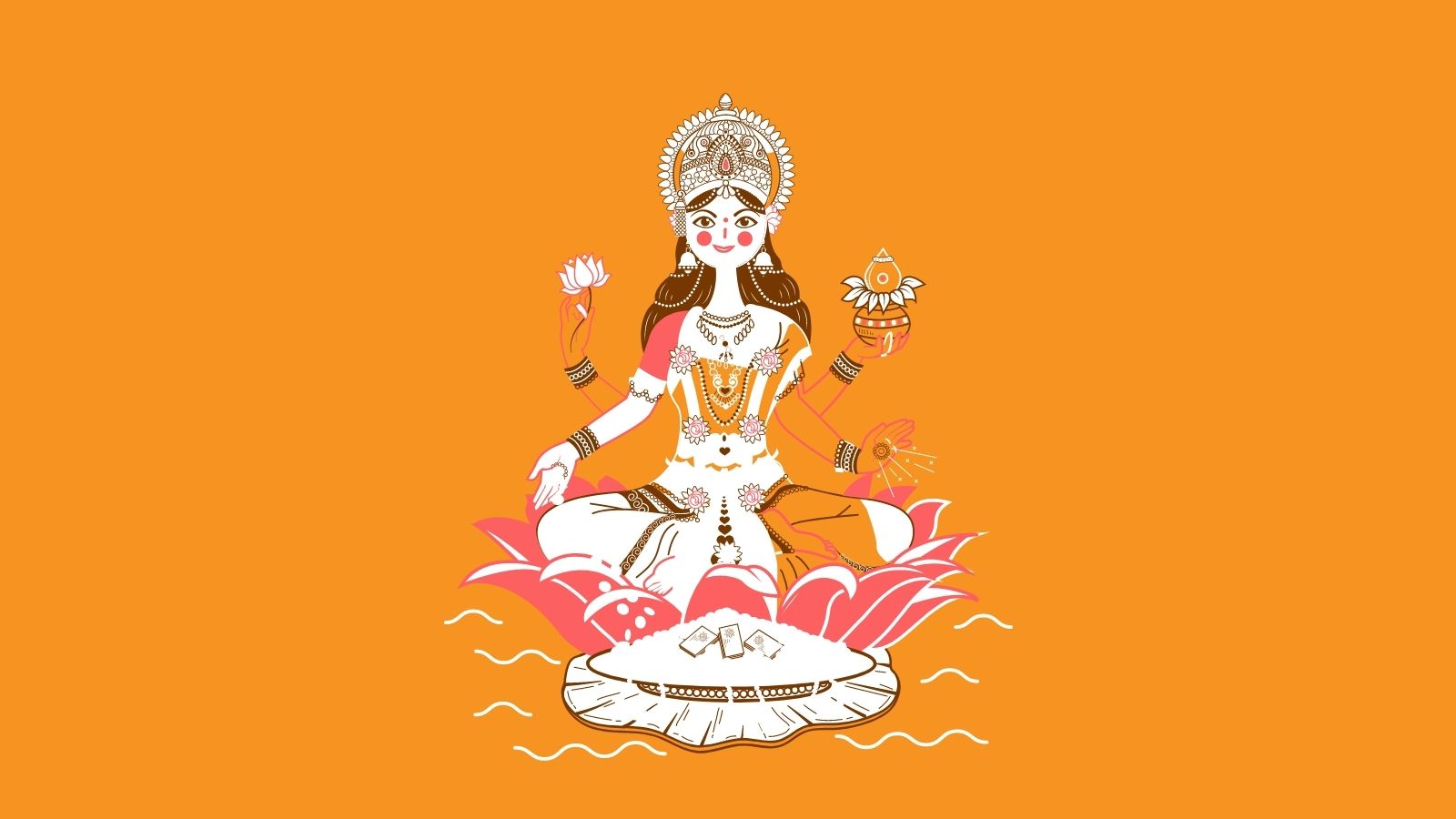Mahāsarasvatī is the presiding deity of the Satva Guṇa-s or nobleness. Today on Sarasvatī Puja let’s reflect on the significance of this concept. The clothes, ornaments of the Sarasvatī deity is white in colour representing the Satva Guṇa.
By Abhishek Kumar Panda, Guest Author at Rashtram
The contemplation of the human mind is limited by time, space and causation. For example, concepts such as timeless or formless are hard to gauge ordinarily. The mind operates with respect to references and understands the phenomenon by assigning causal factors to them. Understanding this nature of human mind, Hindu Deities are conceptions by extraordinary individuals, namely Ṛṣi-sand Muni-s, in the meditative state who could transcend these limitations. Deities are manifestations of various principles in easy to comprehend and expressions of subtle energies in easy to practice forms for mere mortals.
The three Devis Mahālakṣmī, Mahākālī and Mahāsarasvatī represent the three Guṇa-s (qualities) of the Prakriti or creation. Mahākālī is the presiding deity of the Tama Guṇa-s or inertness. Mahalakshmi is the presiding deity of Raja Guṇa-s or activeness. Mahāsarasvatī is the presiding deity of the Satva Guṇa-s or nobleness.
Today on Sarasvatī Puja let’s reflect on the significance of this concept. The clothes, ornaments of the Sarasvatī deity is white in colour representing the Satva Guṇa. The worship is prevalent mainly in educational institutions. Mahāsarasvatī, the deity of Sattva Guṇa, is the Jñāna Śakti of the creation. Jñāna or the knowledge here is that of the Ātma Vidyā or knowledge of true Self. She carries the Vedas in her hands that contains this ultimate knowledge. Thus every knowledge flows from Her.
The Biṇā that She carries in her hand symbolises the physical brain and the spinal column. The strings represent the several subtle Nāḍī-s that run within it like Suṣumnā and Brahma. Through yogic practice, one can feel the sounds and vibrations within them and absorb the virulent mind to a tranquil state. This helps in absorbing knowledge.
The Akṣamālāof The Devi has 50 rosary beads representing the 50 alphabets(16 vowels and 34 consonants) of Sanskrit. These are the 50 basic seed sounds. Our thoughts are combinations of these vibrations. The Meru of the rosary that indicates the beginning and end is the Aum vibrations. A spiritual practitioner contemplates each basic sounds and cleans his mind of past imprints and future desires. He could then reach the root sound of creation and destruction- Aum.
The lotus on which The Devi sits in the seat of Saguṇa Brahman – The Absolute manifesting itself in the creation.
The mount of the deity is a Swan or Haṃsaḥ. Haṃsaḥ Sadhanā is a yogic technique of knowing the Ātmā or the true Self. It is also known by other names like- Sohaṃ Sadhanā, Ajapā Japa, Ajapā gāyatrī, Ānāpānasati. Every individual is covered by the veil of ignorance. The ignorance is a multiplicity of identities. Every individual identifies with limited identities of mind and body and its corresponding attributes. This strengthens the Ahaṃ or ego principle. It is nothing peculiar with human race rather it’s the nature of the macrocosm as well to keep multiplying. An individual always seeks to fulfill its shortcomings or wants. But it creates multiplicities and differentiations in the process. This is Avidyā or ignorance of the underlying unity.
The Jīva or the individual is the Haṃ. Haṃ is “I”. Jīva is separated from the Purusha, the Shiva or the Supreme Being by the veil of ignorance. Saḥ is the Supreme Being or the Ultimate Reality. Saḥ is “That”. The inhalation is Saḥ and exhalation is Haṃ. The Prāṇavāyu is the bridge that links “I” and “That”. The Sadhanā is the realization of “I am That” by killing the ignorance of mind.
So Swan, the mount of Sarasvatī, represents the merger of life force with the cosmic force, microcosm and the macrocosm. With the merger, there is a loss of ignorance and individuality or limited identity. The individual finally transcends the limitations of time, space and causation. Mahāsarasvatī rides the Haṃsaḥ. She is formless, timeless and causeless. Yet She is represented in the form for benefit of people, for attaining the transcendental state. The Kamaṃḍala seen in some forms of the Sarasvatī symbolizes the ignorant Jīva or the individual. The water inside the Kamaṃḍala is the Prāṇa or the all-pervading Consciousness that is eternal, unlike the impermanent body and mind. Therefore the worship of Mahāsarasvatī has a special purpose for students. It inspires to cultivate and imbibe noble qualities for the gain of knowledge. The yogic practise helps in focusing the mind and keeping away the noise or reactive nature of mind. And ultimately attain the Ātmā Vidyā- the highest form of the knowledge. Thus the worship of Sarasvatī is the cultivation of the Satva Guṇa and elevation of the life force or all-pervading Consciousness within us.
References:
- Hindu DevaDevi Puja Rahasya by Paramahamsa Hariharananda, Gita press, Gorakhpur.
- Kriya Yoga: The Science of Life Force by Swami Nityananda Giri, Munshiram Manoharlal Publishers Pvt. Ltd., New Delhi
- SriDurgaSaptasati, Hindi Translation by Sri Ramnarayan Dutt Ji Shastri, Gita press, Gorakhpur.

